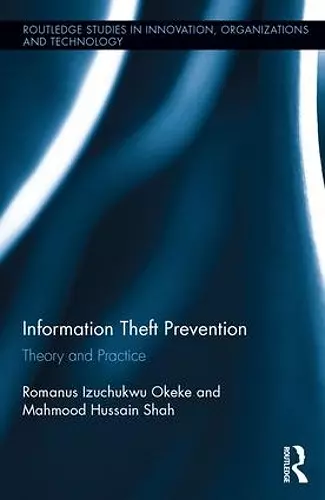Information Theft Prevention
Theory and Practice
Mahmood Shah author Romanus Okeke author
Format:Hardback
Publisher:Taylor & Francis Ltd
Published:19th Feb '16
Currently unavailable, and unfortunately no date known when it will be back
This hardback is available in another edition too:
- Paperback£44.99(9781138617193)

As retail businesses migrate to the digital realm, internal information theft incidents continue to threaten on-line and off-line retail operations. The evolving propagation of internal information theft has surpassed the traditional techniques of crime prevention practices. Many business organizations search for internal information theft prevention guides that fit into their retail business operation, only to be inundated with generic and theoretical models. This book examines applicable methods for retail businesses to effectively prevent internal information theft.
Information Theft Prevention offers readers a comprehensive understanding of the current status of the retail sector information theft prevention models in relation to the internationally recognized benchmark of information security. It presents simple and effective management processes for ensuring better information system security, fostering a proactive approach to internal information theft prevention. Furthermore, it builds on well-defined retail business cases to identify applicable solutions for businesses today. Integrating the retail business operations and information system security practices, the book identifies ways to coordinate efforts across a business in order to achieve the best results. IT security managers and professionals, financial frauds consultants, cyber security professionals and crime prevention professionals will find this book a valuable resource for identifying and creating tools to prevent internal information theft.
Praise for the first edition:
‘Okeke and Shah (both, Univ. of Central Lancashire, UK) focus on prevention and detection of theft in the retail economic sector that in some way leverages information systems; however, much of the book is relevant to any arena in which financial transactions or other valuable information is managed and exchanged. Despite the reluctance of institutions to release information about breaches of their security, the authors summarize many empirical studies to characterize the variety of ways and means by which either employees or outsiders have circumvented security measures to steal money or information from all types of commercial enterprises. Other sections review researchers' understanding of characteristics of thieves and organizational weaknesses that enable theft or hinder detection. Many short case studies are included to illustrate the general points of the text; every section is heavily documented. It is a bit dispiriting to reckon with the extent of thefts, especially by employees entrusted with responsibility, and recommended oversight and detection methods may seem to some to further an atmosphere of distrust or antagonism. Yet, if there is an overriding theme in the detailed suggestions for combating theft, it is the need for careful coordination and collaboration among the many operating components of any enterprise.’-- D. Bantz, University of Alaska
ISBN: 9781138841673
Dimensions: unknown
Weight: 385g
178 pages